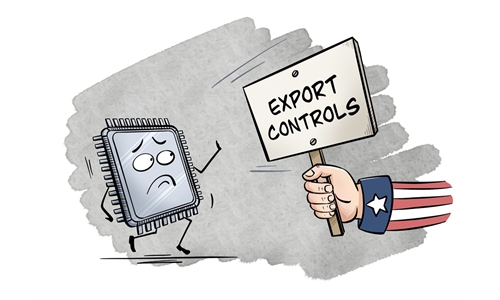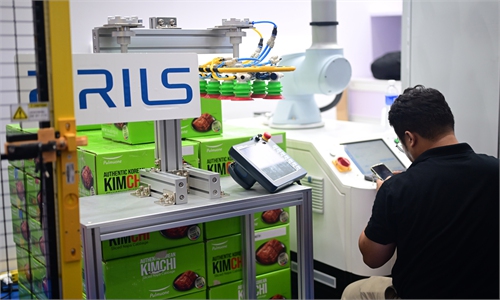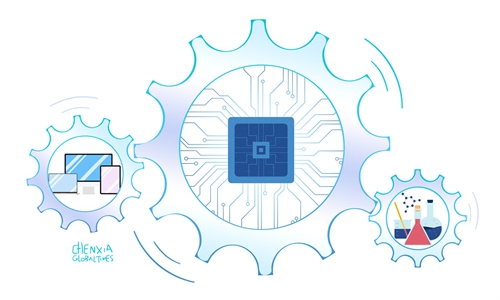
Illustration: Xia Qing/GT
Due to rising cement prices, the South Korean government has announced plans to import cement from China, which is reportedly about 15 percent cheaper than cement produced in South Korea.If the preparations go smoothly, imports are anticipated to start around 2026, industry media outlet Global Cement reported on Tuesday.
As certain economies periodically promote the rhetoric of "decoupling" from China - calling for import tariffs on a wide range of Chinese products, from steel to cement - South Korea's plan to import Chinese cement to alleviate the rising cost pressures highlights the critical need for enhanced industrial cooperation.
South Korea's cement industry is grappling with multiple challenges in its transformation, necessitating reliance on imports to meet domestic demand and stabilize prices, as reported by various media outlets. Increasing cement imports from China are expected to alleviate the predicaments faced by related sectors in South Korea.
In recent years, cement prices in South Korea have surged due to several factors, including rising labor costs, escalating energy prices and the need for an industrial transformation. This has resulted in a staggering cumulative increase in prices, which has not only raised the costs of the construction industry but also triggered a ripple effect throughout the broader economy, leading to widespread concern and dissatisfaction.
In contrast, China's robust cement production capacity has been a vital source of support and supply for overseas markets, particularly in developing countries experiencing an ever growing demand for essential raw materials like cement, driven by rapid infrastructure development.
China's cement and clinker exports reached 3.63 million tons from January to August in 2024, a year-on-year increase of 61 percent, according to data from the General Administration of Customs (GAC).
South Korea's plan to import cement from China is expected to reduce costs in the South Korean construction sector and alleviate pressures in related sectors of the whole industrial chain. This win-win cooperation model will address South Korea's current supply challenges in basic industrial materials.
More importantly, increased trade and economic cooperation between South Korea and China can foster deeper industrial chain cooperation in infrastructure development, injecting new momentum into the long-term economic growth of both countries.
Although the structure of economic and trade relations between China and South Korea has changed over the past decades and faces external disruptions, the trend of growth remains unchanged. The economic complementarity between China and South Korea continues to remain robust, broadening to encompass a diverse array of cooperation opportunities.
From January to August, yuan-denominated trade between China and South Korea reached 1.51 trillion yuan ($216 billion), an increase of 8 percent year-on-year, according to data from the GAC. South Korea is China's fourth-largest trading partner.
With increasing cooperation in more new categories and fields, South Korea's new plans to import basic industrial materials reflect a solid foundation for stable cooperation, which helps both sides address the temporary challenges encountered by traditional industries during dynamic adjustments.
The mutually beneficial economic and trade relationship highlights the importance of strengthening cooperation within the industrial chain. It also underscores the need to cultivate and maintain a resilient industrial chain in the Asia-Pacific region.
From the perspective of economic and market principles, putting up trade barriers will only increase costs for both parties, resulting in a lose-lose situation. In contrast, more free trade will reduce costs for all parties involved, helping them leverage one another's comparative advantages and more efficiently promote economic development.
Over the past few decades, China has established a complete modern industrial system, making it the only country in the world to possess all industrial categories listed in the UN's industrial classification. There is significant trade in basic materials and intermediate products between China and other economies in the Asia-Pacific region, including South Korea.
The notion of "decoupling" from China, which has been promoted by certain Western countries, stands in stark opposition to the interests of the Asia-Pacific industrial chain. The region's economies would benefit more from collaboration and integration, but not isolation. Collaboration and integration would enhance their competitive edge and contribute to sustainable economic development across the entire Asia-Pacific region.
The author is a reporter with the Global Times. bizopinion@globaltimes.com.cn



